| History of Quebec |
|---|
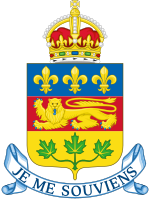 |
| Timeline |
| Territory of Quebec |
|
| Topics |
This section of the timeline of New France history concerns the events between Jacques Cartier's first voyage and the foundation of the Quebec settlement by Samuel de Champlain.
| History of Quebec |
|---|
 |
| Timeline |
| Territory of Quebec |
|
| Topics |
This section of the timeline of New France history concerns the events between Jacques Cartier's first voyage and the foundation of the Quebec settlement by Samuel de Champlain.
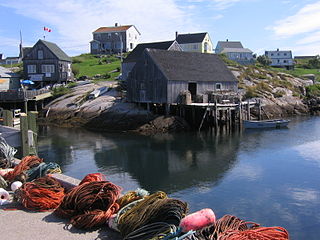
The Maritimes, also called the Maritime provinces, is a region of Eastern Canada consisting of three provinces: New Brunswick, Nova Scotia, and Prince Edward Island. The Maritimes had a population of 1,899,324 in 2021, which makes up 5.1% of Canada's population. Together with Canada's easternmost province, Newfoundland and Labrador, the Maritime provinces make up the region of Atlantic Canada.

Samuel de Champlain was a French explorer, navigator, cartographer, draftsman, soldier, geographer, ethnologist, diplomat, and chronicler. He made between 21 and 29 trips across the Atlantic Ocean, and founded Quebec, and New France, on 3 July 1608. An important figure in Canadian history, Champlain created the first accurate coastal map during his explorations and founded various colonial settlements.

The St. Lawrence River is a large river in the middle latitudes of North America. Its headwaters begin flowing from Lake Ontario in a roughly northeasterly direction, into the Gulf of St. Lawrence, connecting the North American Great Lakes to the North Atlantic Ocean, and forming the primary drainage outflow of the Great Lakes Basin. The river traverses the Canadian provinces of Ontario and Quebec, as well as the U.S. state of New York, and demarcates part of the international boundary between Canada and the United States. It also provides the foundation for the commercial St. Lawrence Seaway.

Jacques Cartier was a French-Breton maritime explorer for France. Jacques Cartier was the first European to describe and map the Gulf of Saint Lawrence and the shores of the Saint Lawrence River, which he named "The Country of Canadas" after the Iroquoian names for the two big settlements he saw at Stadacona and at Hochelaga.

New France was the territory colonized by France in North America, beginning with the exploration of the Gulf of Saint Lawrence by Jacques Cartier in 1534 and ending with the cession of New France to Great Britain and Spain in 1763 under the Treaty of Paris.
Saint Croix Island, long known to locals as Dochet Island, is a small uninhabited island in Maine near the mouth of the Saint Croix River that forms part of the Canada–United States border separating Maine from New Brunswick. The island is in the heart of the traditional lands of the Passamaquoddy people who, according to oral tradition, used it to store food away from the dangers of mainland animals. The island was the site of an early attempt at French colonization by Pierre Dugua, Sieur de Mons in 1604. In 1984 it was designated by the United States Congress as Saint Croix Island International Historic Site. There is no public access to the island, but there is a visitor contact station on the U.S. mainland and a display on the Canadian mainland opposite the island.

The 16th century in Canada saw the first contacts, since the Norsemen 500 years earlier, between the indigenous peoples in Canada living near the Atlantic coast and European fishermen, whalers, traders, and explorers.

Events from the 1600s in Canada.
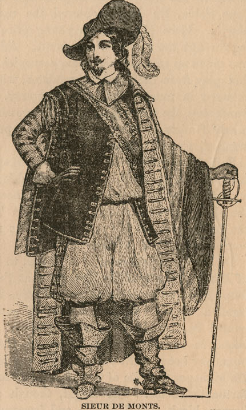
Pierre Dugua de Mons was a French merchant, explorer and colonizer. A Calvinist, he was born in the Château de Mons, in Royan, Saintonge and founded the first permanent French settlement in Canada. He was Lieutenant General of New France from 1603 to 1610. He travelled to northeastern North America for the first time in 1599 with Pierre de Chauvin de Tonnetuit.

Port-Royal National Historic Site is a National Historic Site located on the north bank of the Annapolis Basin in the community of Port Royal, Nova Scotia, Canada. The site is the location of the Habitation at Port-Royal.

The colony of Canada was a French colony within the larger territory of New France. It was claimed by France in 1535 during the second voyage of Jacques Cartier, in the name of the French king, Francis I. The colony remained a French territory until 1763, when it became a British colony known as the Province of Quebec.
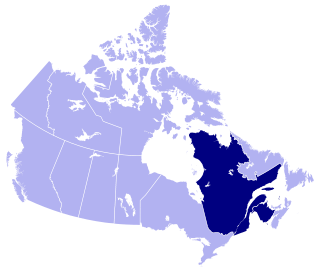
French is the mother tongue of approximately 7.2 million Canadians according to the 2016 Canadian Census. Most Canadian native speakers of French live in Quebec, the only province where French is the majority language and the only province in which it is the sole official language. Of Quebec's people, 71.2 percent are native francophones and 95 percent speak French as their first or second language.

The Company of One Hundred Associates, or Company of New France, was a French trading and colonization company chartered in 1627 to capitalize on the North American fur trade and to expand French colonies there. The company was granted a monopoly to manage the fur trade in the colonies of New France, which were at that time centered on the Saint Lawrence River valley and the Gulf of Saint Lawrence. In return, the company was supposed to settle French Catholics in New France. The Company of One Hundred Associates was dissolved by King Louis XIV, who incorporated New France into a province in 1663.

Hochelaga was a St. Lawrence Iroquois 16th century fortified village on or near Mount Royal in present-day Montreal, Quebec, Canada. Jacques Cartier arrived by boat on October 2, 1535; he visited the village on the following day. He was greeted well by the Iroquois, and named the mountain he saw nearby Mount Royal. Several names in and around Montreal and the Hochelaga Archipelago can be traced back to him.

The Annapolis River is a Canadian river located in Nova Scotia's Annapolis Valley.
Mathieu da Costa was an Afro-French member of the exploring party of Pierre Dugua, the Sieur de Monts, and Samuel de Champlain that travelled from France to the New World in the early 17th century. He was the first recorded free black person to arrive on the territory of today's Canada.
François Gravé, said Du Pont, was a Breton navigator, an early fur trader and explorer in the New World.

Fort Ville-Marie was a French fortress and settlement established in May 1642 by a company of French settlers, led by Paul de Chomedey de Maisonneuve, on the Island of Montreal in the Saint Lawrence River at the confluence of the Ottawa River, in what is today the province of Quebec, Canada. Its name is French for "City of Mary", a reference to the Blessed Virgin Mary.
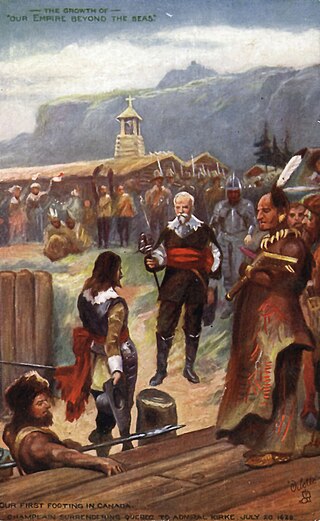
The surrender of Quebec in 1629 was the taking of Quebec City, during the Anglo-French War (1627–1629). It was achieved without battle by English privateers led by David Kirke, who had intercepted the town's supplies.